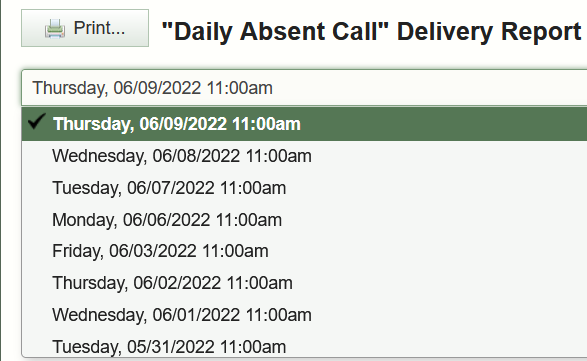12 months of delivery report data is available.
Access the delivery report by clicking on the gear symbol to the right of the completed message and then clicking Delivery Report. The delivery report contains tabs for viewing the alert delivery status of Voice Calls, SMS Text Messages, and emails. The delivery report can be printed. This report is useful in identifying who did/didn't get the alert and helps identify potential contact information errors (wrong phone numbers and email addresses).
Tip: If you press Command/Ctrl+F on your keyboard, a search box opens and you can search for specific information such as a name or phone number in the delivery report.

For one-time alerts, click on the specific alert to see the delivery report.
For recurring alerts, click on the specific alert to see the delivery report and then you can select the specific date.

Tip: If an alert delivery report shows an excessive number of undelivered SMS text alerts, you could send an alert to remind parents that an opt-in is required. They may not get the alert via text, but the automated phone call and email might help to entice an opt-in response. Click here for opt-in requirements.
